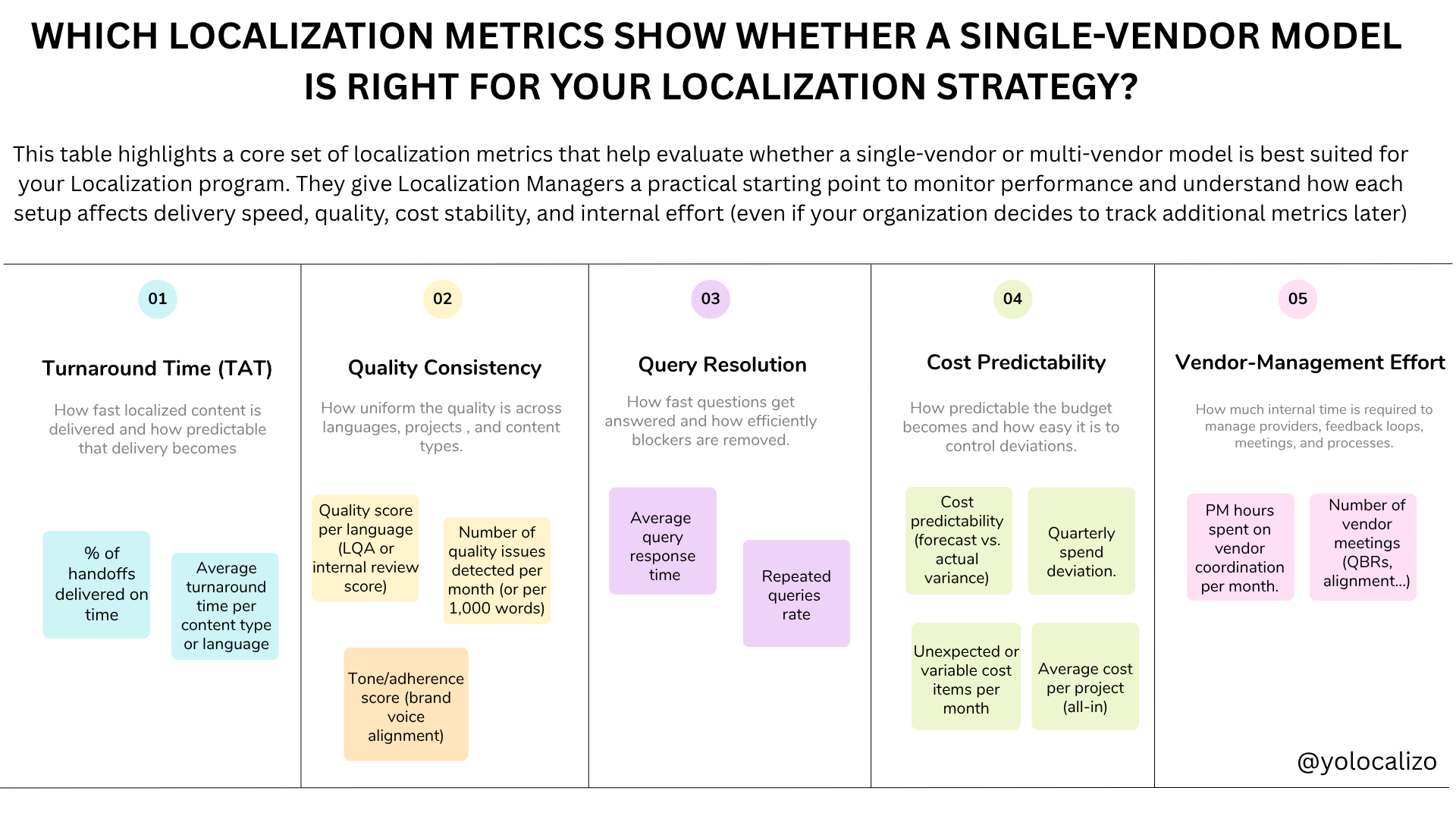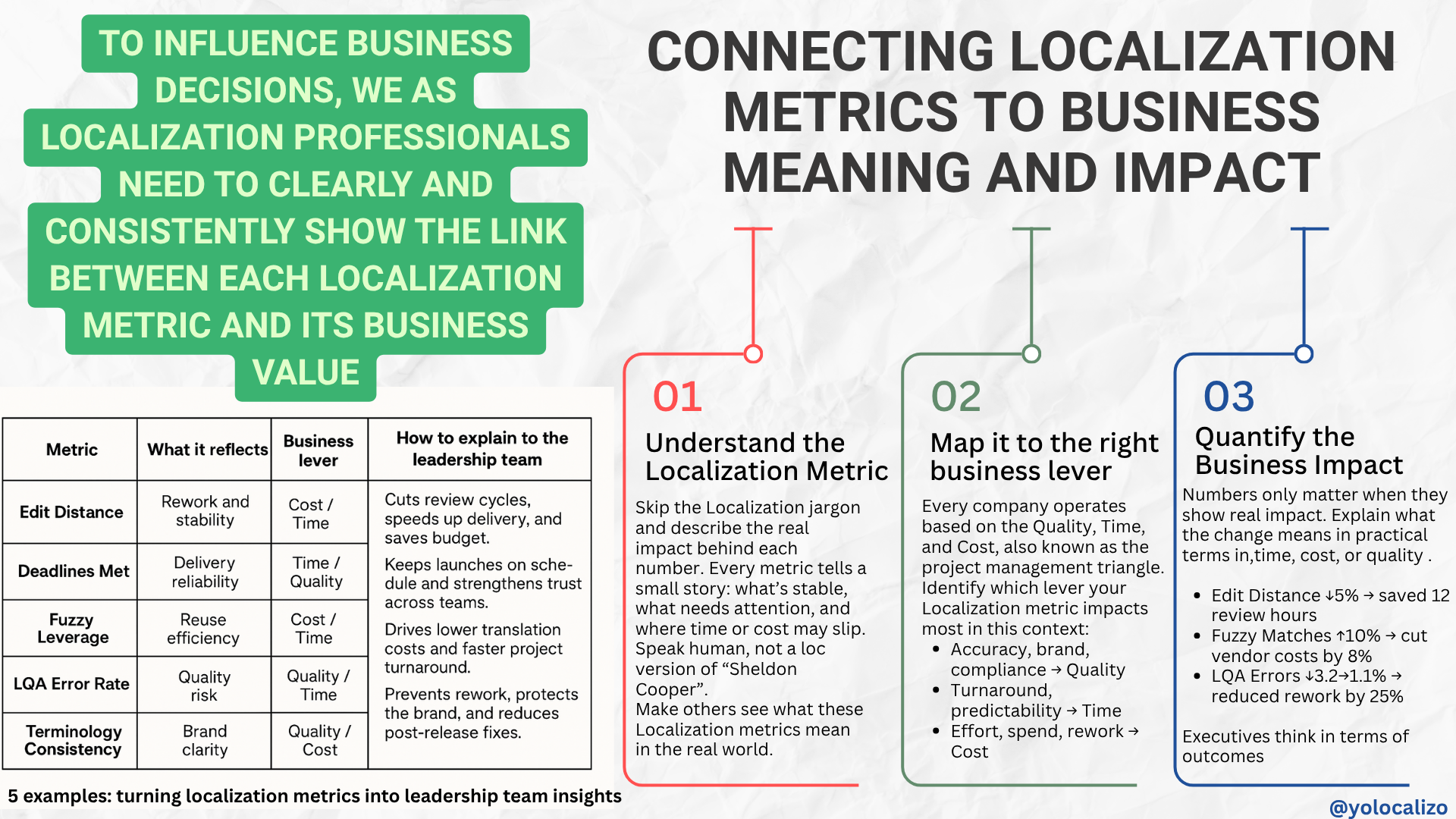Where do we put these guys in the Org Chart???!!! Localization as Shared Strategic Partner to the rescue!
In this second part of the post I continue exploring org-chart possibilities we have for our Localization team and where we might have the best fit.
In part 1 I covered 3 typical models we tend to see at organizations.
What structure could be the best for a Loc team?
The way I see it …. that’s the coordinated model; as long as Loc is setup as a shared service.
This is the winning formula: Coordinated model+Loc setup as a shared strategic partner. Yay!
In that setup we have a dedicated team focus on localization.
Loc as shared services offers many advantages .
But, what does it really means establishing Localization as shared service?
This means Localization services offer is the “default” within the company, so all localization activities within the company go through Loc team.
During my career I’ve been in different orgchart setups.
- Sometimes shared services,
- sometimes Hybrid (some of the services go through Localization team but others may not. For example marketing might use their own language providers).
- Sometimes in an org-chart highly fragmented; with separate and- autonomous localization teams working on each of the different products.
There’s not a one size fits all, however working with multiple departments can lead to confusion, unnecessary re-work, and worst of all, errors in final products due to a lack of a coordinated strategy.
But why establishing Localization team as a separate entity, as shared services tends to work nicely?
Imagine you are working in a company, where we have multiple local offices. Imagine that you sit in the headquarters but then each office is managing their own local vendors. Working with multiple local translation vendors means each team has various contacts, and usually this will lead to delays due to complex communications. More over consistency and tone of voice is extremely difficult to achieve (and time consuming )
However when we establish Localization as shared service we are going to get a number of positive outcomes, keep reading to have a better understanding of the advantages when establishing Loc teams as shared services in org charts!!
1. A localization lead stablished as a shared strategic partner will be managing/answering directly the linguistics/freelancers/LSPs in a very efficient way; since many questions tend to be the same, instead of answering 1 question 10 times for each of the local offices/language partners, we might keep a Google doc (or any other questions management tool) and we post there the answers visible to everyone working in the project.
2. A localization lead stablished as a shared strategic partner will be managing all communications between the company’s headquarters and the local offices with a greater clarity and alignment.
3. A localization lead working as a shared strategic partner will oversee and guarantee consistency in the brand voice
4. A localization lead stablished as a shared strategic partner will be overseeing the tech framework and s/he will bring predictability (all the translation memories, glossaries, and style guides will be stored in one single location, so every local office, every linguistic and any other internal stakeholder, Customer Care, Marketing etc can access them)
5. A localization lead stablished as a shared strategic partner will be overseeing and running customer satisfaction survey in a very efficient manner.
6. A localization lead stablished as a shared strategic partner will be managing and tracking a global linguistic quality program and defining relevant metrics. We will be able to know how good (or bad) our quality is.
7. A localization lead stablished as a shared strategic partner will be investigating, assessing/working/testing the workflow for localization automation
8. A localization lead stablished as a shared strategic partner will be offering an easier to scale solution. We would not have to reinvent the wheel every time we want to enter a new market. When we identify a potential new market then our shared Localization team knows the process and we don’t need to start from scratch to add a language to our current language coverage portfolio
9. A localization lead working in as a shared strategic partner setup will bring savings because centralization tend to maximize our budgets due to bargaining power when negotiating with the vendors. We can have more control over the company budgets
10. A localization lead stablished as a shared strategic partner will be visualizing/tracking ROI per language per product. Productivity metrics are also possible to define and manage as the workflow is centralized. Without a Loc shared services, without centralized tracking system, we will have difficulties to know how much we are spending, who’s spending it, and exactly what we’re investing in. That sounds like a recipe to get in troubles with the financial controllers within our company very soon!
The matrix structure is here to stay, but its complexity can be minimised, and companies can get more value from it . The way a company organizes itself—how it allocates responsibilities, how it organizes support services, and how it groups products, brands, or services—can have a substantial impact on its effectiveness.
Global companies find structure difficult because there are no simple solutions, but Localization teams play a crucial role in this Globalised world we are living nowadays.
A shared service loc team offers new ways to manage complexity. On top of all the advantages listed about there’s one more thing!!!! …..
A Localization team established as a shared strategic partner can help us to achieve the level 5 in the Localization Maturity Model, the highest level in the LMM we might aspire! and hey, let’s be honest, be on the top of LMM model, and being seen within the company as an essential function to drive profit feels good.
I hope you have found these posts useful, There are different ways to put localization into play for your company. If you have the chance… put yourself as a shared service offering a central solution and central services for everyone within your organization. At the beginning you might feel overwhelmed for the high amount of stakeholders to satisfy … but in the long run, you’ll be happy to see that scalability, efficiency and visibility is not an issue anymore.
Are you currently a Localization Manager deciding how to organize Loc within your company? Or maybe you already completed that journey? What lessons have you learnt? What tips and guidance would you share with someone who has interest in understanding where to place Localization in the org chart of his company?
Feel free to comment and join me on social media! LinkedIn, Twitter or email
Have a great week !
@yolocalizo















This feels like a pivotal moment. Localization teams are being asked to support more markets, move faster, use AI responsibly, and show impact, not just output. Expectations are higher than ever, but many teams are still trained mainly for execution. We are strong at delivering localization work, yet we often struggle to move from output to outcome and to clearly explain the impact of what we do.